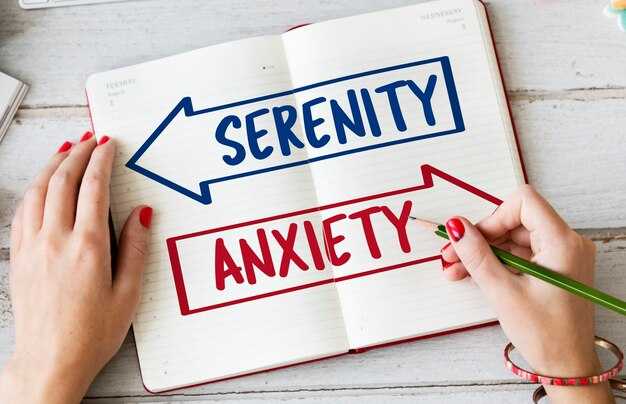People often teach that relationships should be rooted in selflessness, and there is truth in that—yet a crucial question remains: when does giving turn harmful? There is nothing inherently wrong with caring for others. You may take genuine pleasure in offering your time and energy to those you love, intuitively noticing what they need, looking for ways to support them, and wanting them to feel seen, appreciated, and valued. Those acts can bring you joy. On top of that, some people seem to have an almost uncanny ability to read others’ faces and moods, to sense how someone is feeling before a word is spoken. Folks naturally confide in you when they’re hurting because you listen well, empathize, and often offer wise guidance for personal or relational struggles. All of that is kind, compassionate, and beautiful; none of it should be stopped. The problem emerges when selflessness becomes entangled with identity. Giving crosses into toxicity when one’s sense of worth is measured by how much they give. It becomes dangerous when prioritizing others replaces self-regard and leaves the giver chronically overlooked. Anticipating someone’s needs is noble, but if that care is never returned, it doesn’t feel like love—it feels one-sided. You may be the first to make sacrifices while rarely seeing your partner sacrifice for you. Being considerate is admirable, but when raising your own needs results in dismissal rather than the same empathy you offer, the imbalance becomes painful. Wanting to learn how to meet your partner’s love needs is healthy—but do they want to meet yours? Sometimes you’ll always out-give the other person, and that’s okay if the relationship still feels intentionally reciprocal. But if you can’t vulnerably and specifically explain what makes you feel loved without being minimized, blamed, or accused of being “too needy,” then something has gone wrong. When attempts to express feelings repeatedly lead to forgetfulness, gaslighting, or fights that end with you apologizing for even naming an emotion, selflessness has likely slid into an unhealthy pattern. So how can you tell the difference between being kind and being selflessly harmed? The signs are clear: you don’t feel reciprocity; your partner isn’t a safe place for your emotions; you give with unspoken expectations and then accumulate resentment when they’re unmet. Having reasonable expectations is not selfish—that’s the core issue. Your frustration exists for a reason: your heart recognizes unfairness. Everyone deserves safety and consistency. It’s not loving to belittle, invalidate, ignore, or yell at someone; it’s not respectful to punish them for making an emotional request instead of listening. It’s natural for the body to respond with anger or to withdraw in order to prevent future harm. That pattern explains passive-aggressive behavior, heightened sensitivity to small triggers, and the sense that every little thing can escalate into an argument. The fights aren’t really about dishes or laundry; they’re about broken trust and chronic disrespect. You’re asking for minimal consideration, and that basic request is repeatedly denied. You might have tried every strategy—calm conversations, heated arguments, the silent treatment, passive aggression, requesting counseling—yet still feel trapped and powerless. The aim here isn’t to dictate whether to stay or leave, but to empower the truth that everyone deserves more than the bare minimum: respect, kindness, and genuine care. It remains your responsibility, though, to stand up for those needs and to set protective boundaries. Being highly giving doesn’t obligate anyone to accept being taken from. People-pleasers often doubt their own needs, especially if a partner belittles or accuses them of being “crazy.” Over time, repeated demeaning messages can erode self-belief. In many relationships, boundaries and non-negotiables weren’t established early on—conflict was avoided to prevent distance. Ironically, that avoidance frequently led to the very disconnection feared. Selfless individuals should be gently reminded that their relationship with themselves largely determines how they relate to others: self-worth, internal dialogue, and beliefs about what one deserves directly shape external relationships. Past wounds can teach someone to consider themselves undeserving of prioritization. That belief can drive choices that confirm the expectation of neglect—dating people who reinforce a narrative of unworthiness. Seeking validation from others for one’s value is risky: worth must be cultivated internally first. Entering relationships with a “savior” mindset—believing love can heal someone’s trauma or dysfunction—often backfires. Wanting to help or heal a wounded partner is understandable, but when the other person refuses to do their own work, repeated attempts to fix them can lead them to view the helper as an adversary. Healing someone who won’t change is not one’s responsibility. Why are people prone to these dynamics? A powerful factor is fear of abandonment. To avoid being left, many end up abandoning aspects of themselves. That paradoxical strategy often attracts partners who are selfish, emotionally immature, or narcissistic, and those partners may ultimately abandon the giver anyway. Control is not the solution; the only honest course is to articulate needs and boundaries—clearly, vulnerably, and repeatedly—and then accept that the other person may choose not to respond. It’s not acceptable to manipulate someone into caring; the only obligation is to recognize self-worth and to step away from those whose actions say, “You are not a priority.” Lack of self-reflection can lead to externalizing blame only, without seeing how past patterns contributed to current suffering. That doesn’t excuse mistreatment—no one deserves abuse and accountability is essential—but it does mean that creating healthier relationships often requires examining one’s own attachment patterns and readiness to change. If the description above resonates, exploring anxious attachment with a therapist or through research may be helpful. A fear of abandonment puts the nervous system on constant alert: caregivers who were inconsistent left a legacy of hypervigilance, so the present strategy becomes people-pleasing, overgiving, and monitoring any threat to closeness. The panic when a message isn’t returned immediately is the nervous system’s alarm: close the distance at any cost. But those tactics sabotage genuine intimacy. Pretending everything is fine or hiding the true self prevents honest vulnerability and deep connection—especially if there’s an internalized belief that love must be earned. That belief—that being loved depends on earning it—can keep someone trapped in unhealthy or abusive relationships. Seeking worth through another’s acceptance is a recipe for staying where one’s value is denied. The healthier alternative is to recognize intrinsic worth independent of external validation: everyone deserves reciprocation, kindness, and respect as a baseline. How to move forward? Working with a professional can be the fastest way to uncover the seed of unworthiness and to become honest about what one really expects and needs in relationships. Some people have never observed a mutually respectful partnership, so they don’t know what they are entitled to ask for and tend to doubt their needs. The task is to define clearly what makes one feel safe, seen, and prioritized—and to determine non-negotiables around disrespect, chronic anger, or addiction. Don’t accept the bare minimum without first deciding what that bottom line is. When boundaries are undefined, others may keep lowering the standards because that suits them. Part of the healing is owning any emotional unavailability or immature patterns and committing to growth. Let others be who they choose: if someone won’t text back, or refuses commitment and prefers a situationship, that’s their choice—not a statement about one’s worth—and it means they’re free to remain in that state without you. Knowing what one needs and deserves means not settling for less. Loss stings, but remembering that life was intact before the person arrived helps. In healthy relationships, love is shown through consistent actions. Bring authenticity, practice, and patience: there will still be fear and old habits, but the work is to keep protecting oneself while speaking up for needs. Replace apologies for feelings with clear requests; transform passive aggression into direct communication. Recognize that fear of vulnerability often underlies indirect behaviors, and that fear can come from both the relationship and earlier wounds. Begin the healing process with self-compassion: soothe the inner child, acknowledge their protective efforts, and explain that now it’s time to set boundaries around unsafe behaviors. Accept that intimacy requires two people. True connection needs mutual care for one another’s inner worlds—things like trust, consistency, respect, and consideration can’t be produced by just one partner. Boundaries can’t force someone to prioritize; change must be their choice. Relationships will always involve risk—rejection, unreciprocated love—but finding a relationship that is safe and healthy makes that risk worthwhile. In such partnerships, both people do the work, love is demonstrated through behavior, and each person can remain authentic while also practicing protection and honest communication. When that balance is achieved, the risks that come with opening your heart feel like they were worth taking.
Practical steps you can start using today
Small, concrete actions build confidence and safety. Try these immediate practices:
- Self-check: pause and ask, “Am I giving because I want to, or because I’m afraid of what will happen if I don’t?”
- Set micro-boundaries: begin with low-stakes limits (e.g., decline one extra favor this week). Notice how it feels and build from there.
- Use a short communication script: “When you [specific behavior], I feel [feeling] because I need [need]. Would you be willing to [specific request]?”
- Practice saying “no” out loud to yourself or a trusted friend; rehearse a calm phrasing you can use in the moment.
- Put a time buffer on emotional conversations—schedule them when you’re both relatively calm and can listen.
Boundary examples and consequences

Clear, reasonable boundaries and their logical consequences help people understand what you will and won’t accept. Examples:
- Boundary: “I won’t tolerate yelling during disagreements.” Consequence: “If the conversation becomes yelling, I will take a 20-minute break and come back when we can speak calmly.”
- Boundary: “I need to be included in major decisions about our shared finances.” Consequence: “If decisions are made without me, I will pause joint financial plans until we meet with a counselor.”
- Boundary: “I need consistent communication when we make plans.” Consequence: “If you cancel last minute repeatedly, I’ll stop rearranging my schedule for those plans.”
Communication tools
Effective communication is specific and measurable. Use these techniques:
- I-statements: keep focus on your experience rather than accusing language.
- Request, don’t demand: ask for a specific behavior (e.g., “Can you text if you’ll be late?”) rather than a vague promise.
- Reflective listening: after your partner speaks, paraphrase to show understanding before responding. This models empathy and asks for the same in return.
- Limit repair attempts: make a clear request for repair (apology, behavior change) and stop rehashing if no response is given—protect your energy.
Small experiments to test change
Try these gentle tests to see if the relationship can meet your needs:
- Ask for one small, concrete thing and note how it’s handled (e.g., “Can you help with the dishes tonight?”).
- Request emotional support in a calm moment and observe whether your feelings are met with curiosity or dismissal.
- State a boundary and watch whether it’s respected repeatedly; one-time compliance is not the same as lasting change.
Self-regulation and care
People-pleasing is often driven by a stressed nervous system. Practices that help regulate that system include:
- Breathing exercises (e.g., 4-4-4 box breathing) to reduce immediate panic when you feel abandoned.
- Grounding techniques (name five things you see, four you can touch) to interrupt catastrophizing.
- Daily self-compassion statements: remind yourself that needing care is human and not a flaw.
- Regular sleep, movement, and nourishing meals—basic body care strengthens emotional resilience.
Therapeutic approaches and resources
If you’re able, professional support accelerates change. Helpful approaches include:
- Attachment-based therapy: explores how early relationships shape current patterns.
- Cognitive-behavioral therapy (CBT): addresses unhelpful beliefs like “I must earn love.”
- Dialectical behavior therapy (DBT): teaches emotion regulation and boundary skills.
- Emotionally Focused Therapy (EFT) for couples: clarifies attachment needs and patterns with a partner.
- Group therapy or support groups: practicing boundaries among peers can feel safer and corrective.
Red flags that a relationship is unsafe or unlikely to change
These patterns often indicate deeper problems that may not be fixable without sincere effort from both sides:
- Consistent gaslighting or minimizing of your emotions.
- Refusal to acknowledge harm or to engage in any repair.
- Repeated boundary violations after you’ve stated them clearly.
- Controlling behavior, threats, or physical intimidation—these require immediate safety planning.
Safety planning
If you experience or fear abuse, prioritize your safety. Consider confidential resources (local domestic violence services, a trusted professional, or emergency services). Create a plan for where to go and how to get help if needed, and keep important documents and a small amount of money accessible.
Journaling prompts and reflective exercises
Use these to deepen awareness:
- “What do I need that I rarely ask for?”
- “When did I first learn that my needs were less important?”
- “What does a healthy relationship look like to me—list behaviors, not just feelings.”
- “Name three boundaries I want to try this month and the smallest step to implement each.”
Recommended reading and ways to find help

To learn more, consider books on attachment, boundaries, and healing (examples include works on attachment theory, boundaries, and trauma-informed recovery). To find a therapist: search professional directories, ask for referrals from trusted friends or primary care providers, or check local community mental health clinics. If finances are a barrier, sliding-scale clinics, university training clinics, or support groups can be options.
Closing practical reminder
Change is incremental. Celebrate small wins—speaking up once, setting a single boundary, or choosing to step back from someone who takes you for granted. Each act of self-respect rewires your expectations and strengthens your ability to attract reciprocity. You deserve relationships where generosity is met with generosity, where requests are heard, and where your innate worth is assumed rather than negotiated. Keep practicing protection, clarity, and compassion—for yourself and for the people you choose to let in.


 A Warning to Selfless People Pleasers.">
A Warning to Selfless People Pleasers.">

 Why Avoidants Only Chase You When These 3 Hidden Needs Are Triggered | Avoidant attachment style">
Why Avoidants Only Chase You When These 3 Hidden Needs Are Triggered | Avoidant attachment style">
 Commitment means MORE than not Getting Divorced">
Commitment means MORE than not Getting Divorced">
 Avoidant Attachment: This "Shift" Isn’t Rejection. It’s Love (Don’t Walk Away) | Jordan Peterson">
Avoidant Attachment: This "Shift" Isn’t Rejection. It’s Love (Don’t Walk Away) | Jordan Peterson">
 ">
">
 How Avoidants Test If You’re Still Available After Rejecting You">
How Avoidants Test If You’re Still Available After Rejecting You">
 How to Apologize the Right way">
How to Apologize the Right way">
 The ONLY way to beat a Narcissist at their own game || Red flags and Green Flags!">
The ONLY way to beat a Narcissist at their own game || Red flags and Green Flags!">
 Join Me in a FREE Daily Practice Call">
Join Me in a FREE Daily Practice Call">
 How to Stop Falling for Partners Who Idealize You (and Then Discard You)">
How to Stop Falling for Partners Who Idealize You (and Then Discard You)">
 Do ALL Her Feelings Deserve Validation?!">
Do ALL Her Feelings Deserve Validation?!">